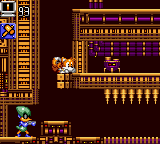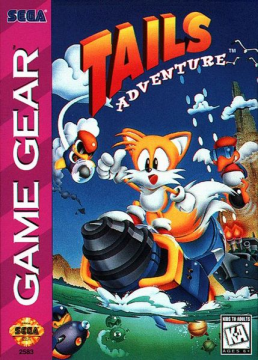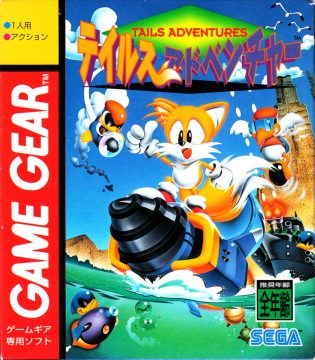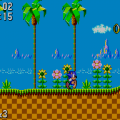- Sonic Generations
- Sonic the Hedgehog
- Sonic the Hedgehog 2
- Sonic CD
- Sonic the Hedgehog 3
- Sonic & Knuckles
- Sonic the Hedgehog 4
- Sonic Mania
- SegaSonic The Hedgehog
- Sonic The Fighters
- Sonic 3D Blast
- Knuckles’ Chaotix
- SegaSonic Bros.
- Sonic the Hedgehog (8-bit)
- Sonic the Hedgehog 2 (8-bit)
- Sonic Chaos
- Sonic the Hedgehog Triple Trouble
- Tails’ Skypatrol
- Tails Adventures
- Sonic Labyrinth
- Sonic Drift
- Sonic Drift 2
- Sonic Blast
- Sonic R
- Murder of Sonic the Hedgehog, The
- Sonic Advance
- Sonic Advance 2
- Sonic Advance 3
- Sonic Rush
- Sonic Rush Adventure
The second Tails spin-off is Tails Adventures, another Game Gear exclusive that stands out for being the only game in the entire franchise to be a Metroidvania – a sub-genre of platformers with a large focus on exploration and acquiring upgrades to reach previously unreachable areas (other games in the series, such as Sonic Boom: Shattered Crystal or Sonic Adventure 2, would only use bits and pieces of this formula). And despite a couple of problems, it’s a surprisingly solid example of the genre that fans should check out.
On Cocoa Island, a tiny isle that can’t be found on any map, Tails is taking a break from working on inventions when the forest is suddenly set ablaze by birds piloting dangerous robots. It’s the Battle Kukkus, an army of heavily weaponized birds led by Grand Battle Kukku 15th, and they’re here to find the Chaos Emeralds rumored to be hiding on this island! Now it’s up to Tails to take on the Battle Kukku and stop their dastardly plans.
Tails Adventures is a 2D platformer where your goal is to explore the levels and try to reach the end of them. However, it’s also a Metroidvania, and a lot of changes have been made to the gameplay in order to accommodate this. The most obvious one is how much slower the game is compared to the rest of the series. Instead of speeding through levels and rolling into enemies, you have to walk everywhere and stop to throw bombs at anything in your path.
The health system has been radically changed, scrapping the collectible rings seen in other games for a more traditional hit point counter. You have a set number of rings, which you lose when hit, and will die when you run out of them. Rings can only be found in fragile walls and as occasional enemy pickups.
The biggest change, however, relates to your skillset. You can walk, jump, duck, and fly for a little while, but you can’t do anything related to rolling – you don’t roll in the air, you can’t roll while moving, and you can’t do a Spin Dash. Your only attack at the start is the ability to throw bombs at enemies. And these abilities won’t be enough to get anywhere. To do that, you’ll need to find weapons and gadgets that are hidden within the levels. These allow you to reach previously locked-off areas, defeat certain enemies more easily, and so on. You can also find gadgets and weapons to upgrade the Sea Fox, an underwater craft you use to explore the surrounding ocean and rivers of Cocoa Island to reach more areas.
Despite the wealth of items you can find, you can only equip four at a time (which you swap between when the game is paused). This leads to a mild problem of entering a level, getting a decent way through before you realize you’re lacking a certain item, and then having to leave the level and return to Tails’ House to equip that item. Not helping this is that there’s nothing to tell you what each item does until you equip and use them, which makes experimentation a little frustrating.
Tails Adventures doesn’t have a save system, but instead a password system. Due to the nature of the game, the passwords can get pretty complex to enter, which is rather annoying. Also, Tails’ House is the only ‘save’ point, so if you die anywhere in a level, you go back there after a trip to the main menu and have to do the level again (and falling into a bottomless pit returns you to the map, which means pretty much the same thing). The only bright side is that if you die and continue from the main menu, you can just confirm the onscreen password and carry on.
The island is divided into many areas, which you access via the map-screen. This is quite different to most Metroidvanias, where levels tend to be inter-connected, and is something of a double-edged sword. On the one hand, it allows you to go straight to where you need to go, instead of traipsing across several other locations. However, it also prevents you from familiarizing yourself with levels, which is often crucial to noticing certain areas that may need to be revisited when you get a new item.
This goes on to affect progression. At the beginning, you’ll go straight from one area to the next, since you don’t have enough items to go digging deeper into what’s already there. This is a good idea, since some players will be unfamiliar with Metroidvanias and will need some guidance to get a foothold on how things work. However, when the game does start to open up, it’s likely you’ll be lost because you aren’t familiar enough with the levels to know where to use newly acquired gadgets.
Thankfully, the rest of Tails Adventures is good enough to make up for those problems. While Tails’ walking speed might be a bit too slow for some, the levels are compactly designed so that it never feels like an issue. They’re often full of simple, but well-made platforming sections or puzzles that challenge you to understand how items work in order to move forward.
There are a lot of items on offer, which encourages you to not only explore to see what can be found, but to experiment with different playstyles to find one that suits you best. The amount of freedom you’re given when choosing where to go allows for different routes to be taken, which is a boon for replayability.
The controls are responsive, with Tails jumping, ducking, flying, and attacking whenever you need him to. Combat is quick and pretty satisfying, with most enemies being taken out in a well-angled bomb throw. There are a few boss battles, but they’re largely forgettable affairs where you just have to keep throwing bombs at them from a variety of angles.
The game is short enough, lasting about 3-4 hours if you’re collecting the majority of the items, but it manages to present and utilize its ideas to their potential. The only other issue is that the level designs can be a bit repetitive, with only a couple of areas using their theme of ‘water cave’ or ‘cliff-tops’ to meaningfully inform their designs.
Another minor issue is how average the presentation is. In terms of visuals, the sprites are pretty cute, the environments are nicely detailed, and the framerate is mostly consistent. However, it suffers from a lack of inspired art direction, and the constant re-use (and palette-swapping) of backgrounds and tilesets make the game feel monotonous.
The music, done by Aspect’s in-house composer Kojiro Mikusa, is inoffensive. The soundtrack can do a decent job at setting the mood, with the tunes for Poloy Forest and Caron Forest being pretty good in their own right, but it’s otherwise forgettable and the short loops become grating after a while.
While there’s definitely room for improvement, Tails Adventure is a remarkably solid game that fans of Metroidvanias and unusual Sonic spin-offs should definitely consider checking out.
Years later, Tails Adventures would be loosely adapted in Archie’s Sonic the Hedgehog comic spinoff Sonic Universe. In the “Tails Adventures” arc (issues #17-20), Tails takes on the Battle Kukkus (now renamed the Battle Bird Armada), who have a pre-established connection with the Babylon Rogues from Sonic Riders in this continuity.




